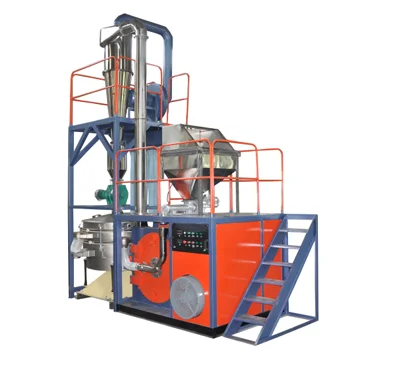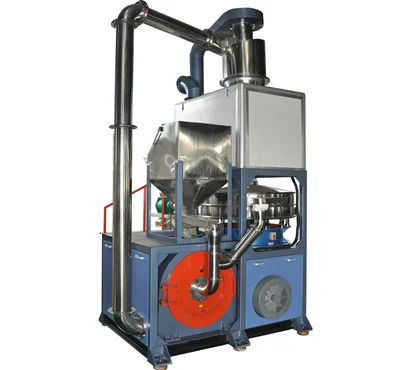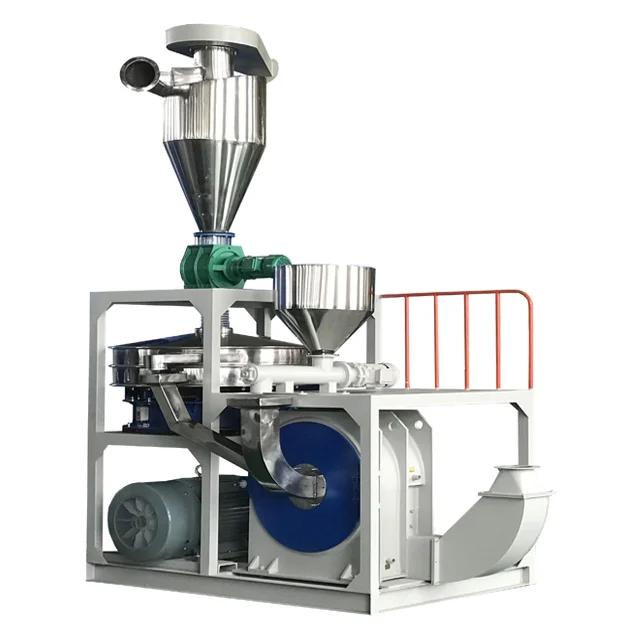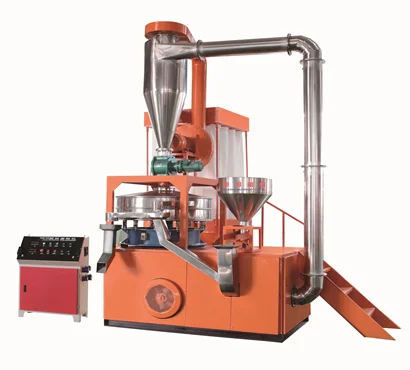Beaches buried in bottles. Nets tangled in coral. Microplastics in fish bellies (and yes, probably in us too). The plastic pollution crisis isn’t just some sad Instagram reel—it’s a growing threat to marine life, ecosystems, and frankly, our own health. We know the problem. But what about the solution? At Amige, we’ve taken one powerful step in the right direction: using plastic pulverizing technology to help recycle ocean plastics efficiently and affordably.
Plastic pulverizing technology is being actively applied in ocean plastic recycling by converting collected marine debris into reusable powder or granules.
These outputs are then reprocessed into new plastic products, reducing waste and creating a viable circular economy for what was once thought to be unrecyclable.
Sounds futuristic? Maybe. But it’s already happening—and we’re in the thick of it.

What kinds of ocean plastics can be pulverized?
Let’s start with the basics. Not all plastics are created equal.
When it comes to marine waste, most of what’s recovered includes polyethylene (PE), polypropylene (PP), polyethylene terephthalate (PET), and sometimes nylon from discarded fishing nets. These are exactly the types of plastic our pulverizers love grinding into reusable material.
Once cleaned and sorted, even weathered, UV-damaged plastics can be crushed into fine particles. Our machines don’t judge. They grind.
How does pulverizing improve the recycling process?
Simple: It adds value where there was once just trash.
Traditional recycling methods often skip marine plastics due to contamination, irregular shapes, or degradation. But by pulverizing these materials into powder, we make them far easier to:
- Filter
- Clean
- Remold
Powder form is also ideal for downstream processes like injection molding, extrusion, or even 3D printing. In fact, one of our partners turns recycled ocean plastic into filament for sustainable design products.

Are there real-world case studies?
Absolutely. I’ve personally seen it work, and I’m not talking theory here.
Take our recent project in Southeast Asia. A local NGO teamed up with a coastal cleanup program to collect abandoned fishing gear and plastic bottles. We deployed a mobile pulverizing unit—yes, a pulverizer on wheels—and converted over 8 tons of mixed ocean plastic into high-quality granules in just two weeks.
These granules were later used by a domestic manufacturer to produce recycled pallets and crates. Real trash, turned into real tools for local businesses.
What’s the role of mobile pulverizing units?
Ah, now we’re getting fancy—and smart.
Shipping bulky waste back to recycling hubs is expensive and inefficient. That’s why we’ve developed compact, mobile pulverizing stations that can operate near coastal zones, harbors, or collection centers.
These units:
- Shred and pulverize on-site
- Include filtration for microplastics
- Run on solar or hybrid power
- Reduce the volume of plastic by up to 80%
We’ve deployed these in pilot projects in Indonesia, Greece, and even along China’s southern coastline.
How does pulverizing tech support circular economy goals?
Let’s talk big picture.
Ocean plastic isn’t just a cleanup problem. It’s a resource management challenge. By integrating pulverizing into marine plastic recovery, we close the loop:
- Collect
- Grind
- Reprocess
- Remanufacture
- Reuse
It’s a feedback cycle that reduces virgin plastic use, lowers emissions, and drives eco-industrial innovation. I like to call it: turning blue ocean trash into green opportunity.

What are the technical challenges?
Of course, it’s not all smooth sailing (pun intended).
- Salt residue and organic matter damage blades
- Moisture content in collected plastic needs drying
- Microplastics are hard to trap without specialized filters
- Plastic diversity complicates grinding uniformity
But hey, engineering is all about solving problems. We’ve added salt-resistant coatings, integrated dryers, and even implemented multi-stage filters to deal with these.
Our R&D department is working on a new model that uses AI to auto-adjust blade speed based on material density. Stay tuned.
Who are the key players applying this tech?
Besides us (obviously 😎), several international coalitions are jumping onboard.
- The Ocean Cleanup is experimenting with ocean-to-shore plastic grinding tech.
- GreenWave Plastics in Europe uses pulverized ocean plastic to make consumer goods.
- Amige (yes, yours truly) partners with coastal governments and private recyclers to deploy pulverizers at critical plastic accumulation points.
We’re even in talks with a cruise line to install a mini pulverizer system onboard to process collected floating trash in real time.
What can governments and businesses do?
I’ll be blunt: waiting around for miracles won’t solve the ocean plastic crisis. But action will.
Governments can:
- Fund localized pulverizing units
- Incentivize recycled product purchases
- Set mandates for marine plastic processing
Businesses can:
- Invest in recycled material innovation
- Partner with pulverizing tech providers
- Adopt green supply chains
It’s not just CSR fluff anymore. It’s smart economics. Ocean plastics are a goldmine—if you know how to grind them right.

What’s next for ocean plastic pulverizing?
The future’s bright—and hopefully less plastic-filled.
Here’s what we’re excited about:
- Nano-grinding for microplastics
- Blockchain traceability from beach to product
- Collaborations with fishermen for net-to-granule programs
- Onboard pulverizing tech for ships and rigs
The goal? Make plastic pulverizing so efficient, so mobile, and so scalable that no piece of ocean plastic gets left behind.
We’re not there yet—but every ton we process brings us closer.
Conclusion
Pulverizing ocean plastic isn’t just possible—it’s already changing the game. By transforming trash into raw materials, we’re building cleaner oceans and stronger economies, one grind at a time.
